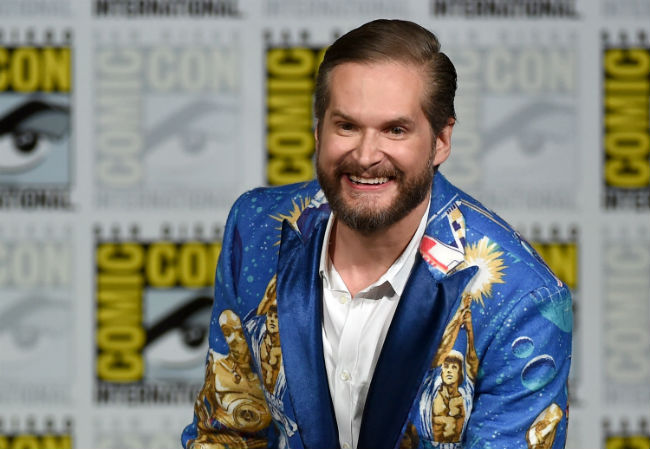
Yesterday, CBS made a major announcement, revealing it had hired Bryan Fuller to run the network’s new Star Trek series, set to debut early next year. Fuller is the consummate showrunner, beloved by critics and with a resumé of beloved cult TV shows: Wonderfalls, Dead Like Me, Pushing Daisies and his crown jewel, Hannibal. Taken together, that resumé shows what Fuller can do, and why he’s perfect for Star Trek.
This is something of a homecoming for Fuller, who got his start thanks to the open door-policy of Star Trek producer Michael Piller. (Piller had a standing rule that he would read any script, amateur or professional, and he used it to find unknown talent; many of the young writers he hired went on to major television careers.) Fuller worked on both Star Trek: Deep Space Nine and Star Trek: Voyager, and wrote most of the fan-favorite episodes of Voyager, such as the mind-control thriller “Workforce” and the affectionate pulp satire “Bride of Chaotica!” Fuller tended to avoid spacetime anomalies and focus instead on the characters, with a particular emphasis on psychological manipulation and the way characters’ pasts caught up with them. An early Fuller episode of Deep Space Nine, “Empok Nor,” has Garak, a beloved minor character played by Andrew Robinson, slowly lose his mind and begin murdering his friends. Fuller lets the question linger of how much of this is due to the episode’s McGuffin of an aggression pheromone that makes Garak’s species even more violent and xenophobic, and how much to the darkness lurking inside the seemingly friendly shopkeeper with a questionable past.
Beyond these recurring themes, Fuller’s shown a surprising capacity for drama, comedy, and an ability to mix the two together — elements found in some of Star Trek‘s defining episodes. His range is impressive: It’s difficult to imagine the wacky comedy of Dead Like Me and the darkly comedic horror of Hannibal coming from the same guy, and yet, he’s responsible for both. Television is approached as a writer’s medium, but Fuller’s shows tend to focus on the medium’s ability to be cinematic. He approaches most episodes as if he’s making a 45-minute movie, as if his audience was paying $10 for an episode and by God, he’s going to get them their money’s worth.
That’s a net benefit for Star Trek. Fuller has always looked to give his shows a distinct visual style to make them stand out and reflect the tone he wants. Pushing Daisies lightened its surprisingly dark themes of death and longing with bright colors and a storybook aesthetic. Every time Ned opened his oven, you could feel the warmth of his kitchen and smell the fresh-baked pie. Hannibal reflected its villain, with a place for everything and everything in its place, and let Fuller push the boundaries of what could be shown on network television simply because it was all so pretty. Could anyone but Fuller have created sequence where Hannibal hunts down, guts, and eats random people that’s aesthetically pleasing enough to get past a network’s censors?
Ever since Gene Roddenberry pitched it to NBC, Star Trek has always needed a powerful voice at the helm. Otherwise, it tends to get wrapped up in the crew’s nobility of purpose, resulting in well-meaning, but clumsy social dramas like the notorious unfilmed script “Blood and Fire.” The original series was anchored by the underrated Gene Coon, Piller’s work on Next Generation turned it into a beloved success to the original series, and Manny Coto managed to help Enterprise go out on some great episodes. CBS hiring Fuller not only shows they understand that need, but that they want Star Trek to be more than just noble; they want it to be great TV.






